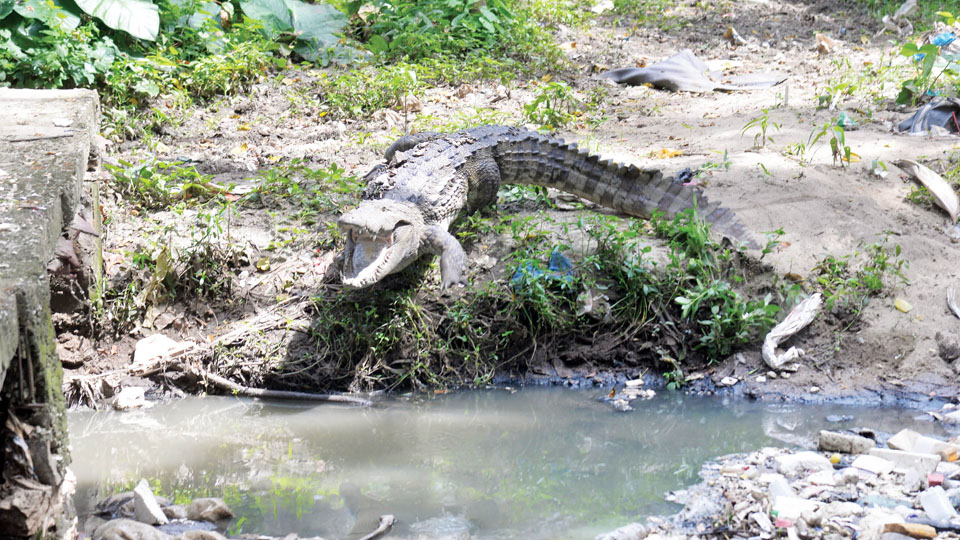Mysore/Mysuru: The huge crocodile that surfaced in the Raja Kaluve near Yele Thota on the evening of Oct. 15, resurfaced again this morning.
While the reptile was spotted inside water last week, today it was basking under the sun with its mouth wide open.
The crocodile was spotted by a few passers-by on 9th Cross of Ramanuja Road adjacent to the Yele Thota.
A huge crowd had gathered at the place to see the animal relaxing under the sun. When it warms its body, the crocodile usually opens its mouth.
As the shouts and cries of people intensified, the reptile slithered into the water and swam away wading the water with its tail. Last week when it was sighted for the first time, the Forest Department carried out a two-hour operation to capture it and the staff managed to put a rope on it. But the reptile quickly got away.
Meanwhile, the repeated surfacing of the crocodile has worried the residents of the Ramanuja Road, Yele Thota and nearby areas that are thickly populated.
The residents have urged the Forest Department to either capture the reptile and leave it at the Mysuru Zoo or rehabilitate it at a suitable place away from the city.








Gauri Satya has posted his article “Collapse of Heritage Structures: Ake-up Call for Mysoreans”, in which he laments about the disappearance of the Yele Thota. Here, we read that this Yele Thota still exists at 9th Cross Ramanuja Road, and one could see the filthy pond, referred to posters in the Bove Gauri Satya article which bred mosquitoes, and which is also the nice abode for this crocodile
This crocodile looks tiny in comparison with what one sees in the swamps of Western Australia and in the Northern Territory there.
I wonder whether Gauri Satya took responsibility to check the facts before he posts , his column inches which has earned him his fee. He should understand that Mysore beetle leaves like Mysore Ganesha Beedis are health hazards, as these leaves were chewed with beetle nus, chumam and tobacco, which caused cancer of the mouth and throat. Ganesha Beedis were responsible for lung cancers among workers .
correction; nuts